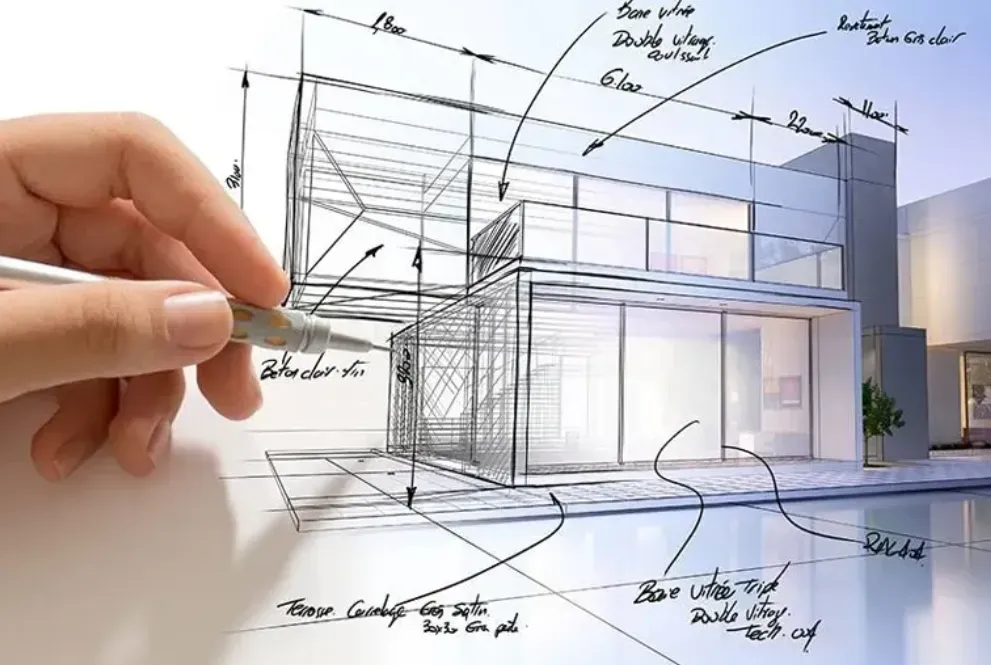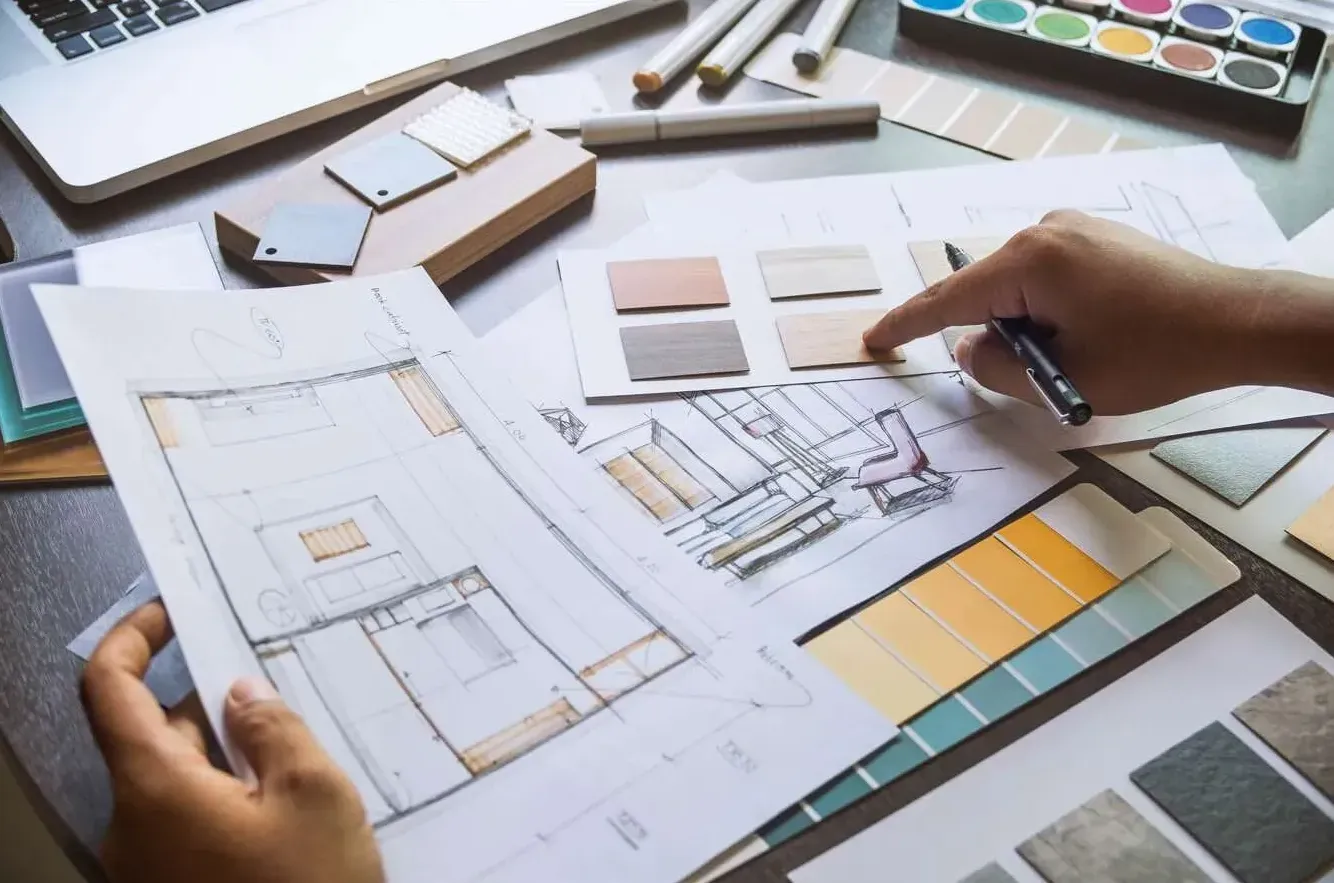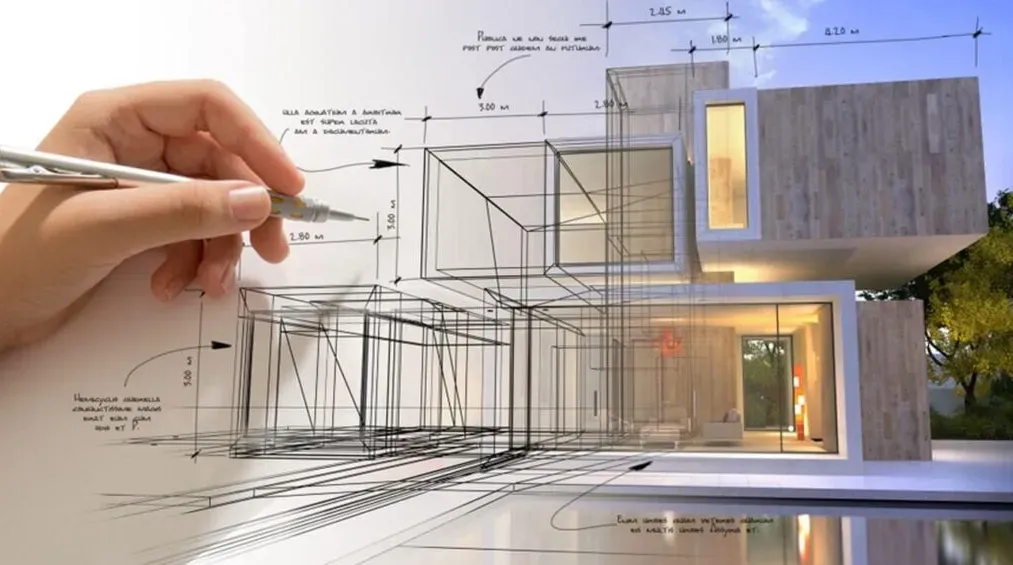Demystifying the Role of an Interior Designer vs. an Architect in Home Projects

By
Shrusti Naik
Posted on September 1, 2025. 10 mins

Demystifying the Role of an Interior Designer vs. an Architect in Home Projects
Introduction

In India’s fast-evolving housing market, design has become just as important as square footage. A recent survey by Statista (2025) revealed that nearly 68% of Indian homebuyers consider professional design input critical to property value appreciation. Yet, when it comes to building or renovating a home, many homeowners face a common dilemma: should they hire an interior designer, an architect, or both? While the two professions often overlap, their core expertise and contributions differ significantly. For Indian families investing in real estate, whether it’s a compact Mumbai apartment, a villa in Hyderabad, or a farmhouse near Nashik, understanding these roles can ensure informed decisions, optimal budgets, and lasting functionality.
The Architect’s Role: From Blueprint to Structural Integrity
At its core, an architect shapes the very skeleton of a building. Architects in India are licensed professionals regulated under the Council of Architecture (COA). Their responsibilities begin even before the first brick is laid, evaluating the plot, complying with municipal by-laws, and designing structural layouts that ensure safety and durability.
For instance, in cities like Bengaluru and Gurugram, rapid urban expansion has made zoning laws and green-building codes critical (Source: Economic Times, Jan 2025). An architect ensures that the home not only aligns with legal requirements but also incorporates modern sustainability practices such as rainwater harvesting and solar orientation. In short, architects focus on the “outside in” approach—creating a structurally sound, efficient, and compliant building framework. With all this, here is another way to enhance your home by Choosing the Right Color Palette for Each Room
The Interior Designer’s Role: From Aesthetics to Everyday Functionality
Once the skeleton of a home is in place, interior designers bring it to life. They focus on optimizing internal spaces, balancing aesthetics with usability. From choosing the right flooring and lighting to ensuring ergonomic furniture placement, their goal is to make homes liveable and reflective of the owner’s personality.
India’s interior design market is currently booming, valued at over USD 31 billion in 2024 and expected to grow at 12% CAGR (Source: Business Standard, Nov 2024). This surge reflects rising urban middle-class aspirations, where even modest homes in tier-2 cities are investing in smart storage, modular kitchens, and mood lighting. Interior designers thus adopt an “inside out” approach, ensuring comfort, style, and practicality. Here's a guide that tells you what to Do (and Avoid) Room-by-Room if you are Designing Your First Home.
Where the Roles Overlap and Why It Matters
Despite their distinct focus areas, architects and interior designers often collaborate closely. Consider a duplex project in Pune: while the architect decides window placements for maximum ventilation, the interior designer may determine curtain textures and color palettes that enhance natural light flow.
In large-scale projects, especially luxury developments in Mumbai or Delhi, clients increasingly prefer integrated teams where architects and designers work hand-in-hand from day one. This synergy not only reduces redesign costs but also creates seamless transitions between structural strength and aesthetic appeal. Besides take a look at Designs You’ll Actually Want to Live With where you can include all these safety measures smoothly.
How to Decide Whom to Hire: Practical Considerations for Indian Homeowners
The decision between hiring an architect, an interior designer, or both often depends on the stage and scale of the project. If you are constructing a new house or undertaking structural changes, an architect is indispensable. On the other hand, if your focus is on renovation, interiors, or functionality upgrades, such as converting a study into a nursery, an interior designer may suffice.
Budgets also play a defining role. Architects in metro cities typically charge 5–7% of construction costs, whereas interior designers may charge per square foot or offer package-based models. In India’s growing DIY and online design consultation trend, hybrid solutions are also emerging, where homeowners can consult architects digitally and execute interiors locally. Besides. here are some Design Choices That Can Actually Increase Your Property Value
The Future of Home Design in India: Collaboration Over Competition
Looking ahead, the distinction between architects and interior designers is likely to blur further. With the government’s push toward green building certifications and rising demand for tech-integrated homes, both professionals will need to work together to create sustainable, smart, and affordable housing solutions. As Indian homebuyers grow more design-savvy, the value of hiring the right expert, or a team of them, will become non-negotiable for maximizing both comfort and property value. Take a look at these Kid-Friendly Interiors That Aren’t an Eyesore
Conclusion

For Indian homeowners, demystifying the roles of an interior designer versus an architect is more than an academic exercise—it’s a financial and emotional safeguard. Architects ensure structural soundness and regulatory compliance, while interior designers make homes livable, functional, and reflective of individual lifestyles. The real magic, however, lies in their collaboration. In an age where Indian real estate is as much about experience as it is about investment, hiring the right professional—or combination of professionals—can make the difference between a house that merely stands and a home that truly lives.
Frequently Asked Questions
Q1. Do I need both an architect and an interior designer for a small apartment in India? Not always. For small apartments where no structural changes are planned, an interior designer is usually sufficient. An architect becomes necessary if walls, layouts, or structural elements are being modified.
Q2. How much does hiring an architect cost in India? Architects typically charge between 5–7% of the total construction cost or a fixed fee. In metro cities, rates may be higher depending on experience and project scale.
Q3. What’s the difference between an interior decorator and an interior designer? An interior decorator focuses mainly on surface-level aesthetics such as furnishings, colors, and accessories. An interior designer goes deeper, considering functionality, ergonomics, and even minor structural adjustments.
Q4. Are online design consultations effective in India? Yes, many firms now offer digital design packages, particularly popular in tier-2 and tier-3 cities. While cost-effective, they may lack the precision of in-person project management.
Q5. Which professional adds more resale value to a home in India? Both contribute. An architect ensures long-term structural integrity, which boosts resale, while an interior designer enhances liveability and immediate appeal, critical in competitive urban markets.